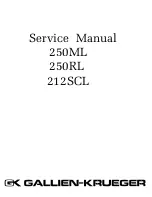
The important point is that this undoped “intrinsic layer” acts like a storage reservoir. When
incoming forward-biased current arrives, this “intrinsic layer” fills up with electrons. When the diode
is reverse biased, it takes time for all these electrons to empty out of the intrinsic layer. At high
enough frequencies, the time available is too short! So the diode never “turns off”. It remains
conducting through the whole RF cycle.
PIN diodes behave like variable resistances. Their resistance is determined by the amount of DC
forward bias current. They are near-perfect variable resistors which add very little distortion to the
signal. In our case, we don’t care about variable resistors, all we want is either a very low
resistance (On), or a very high resistance (Off).
A problem is that PIN diodes tend to be expensive, harder to find
items. However, a solution comes along, the 1N4007 rectifier
diode! This is the big brother of the 1N400x series of rectifier
diodes, and has a reverse voltage rating of 1,000 V. By good
fortune, its internal construction in order to achieve this very high
PIV rating, is very similar to a “real” PIN diode. Hence the
1N4007 is often referred to as the “Poor man’s PIN diode”!
No doubt the 1N4007’s characteristics are not repeatable enough, or its resistance not linearly
controllable enough, or some such other imperfection, that it is not suitable for all applications. But
in our application where all we need is an On/Off switch at HF, a 1N4007 costing mere cents
functions just as well as a “real” PIN diode costing 50x the price!
1N4007 functions well enough as a PIN diode switch across the whole of HF to 10m band, and
even down to 500kHz.
What about dynamic range and third order intercept point IP3? A properly handled 1N4007 should
not impact the dynamic range or IP3. An excellent set of measurements by Claudio IN3OTD see
https://www.qsl.net/in3otd/electronics/PIN_diodes/PIN_diodes.html
electronics/PIN_diodes/1N4007.html
confirms the excellent characteristics of the 1N4007, which at
HF in this switching application are similar to other PIN diodes. Other experimenters have
determined similar results. Broad conclusions are that a properly biased 1N4007 at HF (1.8MHz-
3MHz) has the following characteristics:
•
“On” insertion loss less than 0.1dB for 10mA forward bias current
•
“Off” isolation at least 30dB (at worst case, 30MHz frequency)
•
IP3 > +50dBm
Therefore the use of 1N4007 PIN diode switches should result in very little loss of transmitter
output power, very little loss of sensitivity on receive, and will not degrade the excellent IP3 (and
dynamic range) characteristics of the QCX transceiver.
What of “proper biasing of PIN diodes”?
In my opinion the most excellent reference for the use of PIN diode switches for HF
Transmit/Receive is the work of Don W6JL. Don has a very informative page on QRZ.com
and a long article “Homebrew PIN diode QRO QSK system” in
Funkamateur, March 2016 which is available as a PDF on the internet see
https://www.funkamateur.de/tl_files/downloads/hefte/2017/w6jl_improved_qsk_system_mar_2016.
pdf
. Study of W6JL’s work should be the first task of anyone wishing to experiment with HF PIN
diode switching. Don has a separate homebrew transmitter and receiver. The transmitter is 600W
and is permanently connected to the antenna and the receiver, via his solid state PIN diode
switching system. Sidetone is via the receiver monitoring the transmitter directly! The switch
50W QCX PA kit assembly
1.00q
55
Содержание QCX 50W Amp
Страница 8: ...50W QCX PA kit assembly 1 00q 8...
Страница 9: ...50W QCX PA kit assembly 1 00q 9...
Страница 43: ...50W QCX PA kit assembly 1 00q 43...















































